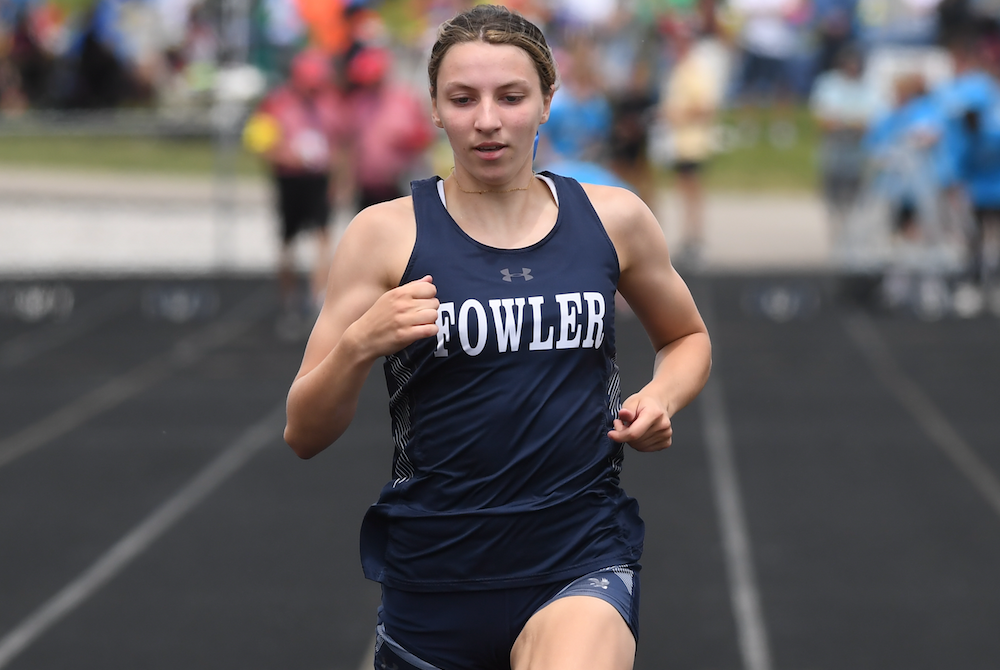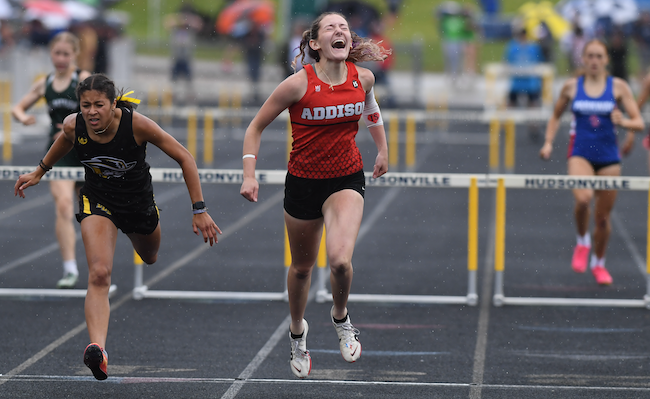
Casting Lines for Future Tournaments
August 12, 2016
By Jack Roberts
MHSAA Executive Director
The MHSAA is best known to the public for the tournaments it conducts to conclude the fall, winter and spring seasons each school year.
These tournaments, the first and largest program of the MHSAA, have survived the Vietnam War, the Korean conflict and two World Wars. They have survived the technology bubble, the housing collapse, the energy crisis and the Great Depression.
MHSAA tournaments existed at the dawn of aviation and at the time of our nation’s lunar landing. Popes, presidents and governors have changed and changed again and again, and MHSAA tournaments roll on year after year.
But the sense of tradition and permanence and inevitability of MHSAA tournaments doesn’t dissuade us from asking questions about our tournaments, even some of the most basic questions. Here are two.
Question #1
I have long been and will always be an advocate for a Ryder Cup format for the MHSAA Golf Finals, and a team tennis approach to the MHSAA Tennis Finals; but 90 years of tradition is hard to overcome. Might this be a more exciting format? Could it be co-ed? Could it reverse the decline in boys tennis participation, and increase girls golf participation? Wouldn’t it be fun to try?
Periodically, the International Olympic Committee requires each of the designated Olympic sports to defend its status, to state its case why the sport should remain a part of the Olympic program. Then, after a series or votes that retain one sport at a time, the IOC drops the sport that makes the weakest case. It does so to make room for one of the previously unlisted sports that makes the best case for inclusion.
This would appear to keep the existing Olympic sports on their toes, and to keep the Olympic movement fresh and reflective of modern trends in sports.
While I would not enjoy the controversy, I can see the potential for some positive results if the MHSAA were to invoke the same policy for determining the 14 tournaments it will provide for girls and the 14 for boys.
This might cause us to consider more deeply what a high school sport should look like, or at least what an MHSAA tournament sport should stand for.
On the one hand, we might be inclined to drop tournaments for those sports that involve mostly non-faculty coaches and non-school venues, or require cooperative programs to generate enough participants to support a team, or resort almost entirely to non-school funding, or cater to individuals more than teams.
Or perhaps this process would cause policymakers to forget traditional thinking and ask: “In this day and age, should we shake off traditional notions of sport and consider more where modern kids are coming from?” That might mean fewer team sports and more individual sports, more “extreme” sports like snowboarding and skateboarding, and more lifetime sports, meaning not just golf and tennis and running sports, but also fishing and even shooting sports.
Currently, MHSAA policy states that the MHSAA will consider sponsorship of a tournament series for any sport which 64 member schools conduct on an interscholastic basis as a result of action by the governing boards of those schools.
Should the only question be how many schools sponsor a sport, or must an activity also have certain qualities and/or avoid certain “defects?” What should an MHSAA tournament sport look like and stand for?
Question #2
Bristling from criticism that his association is a money-grabbing exploiter of children, my counterpart in another state said, “If we were running our programs just to make money, we would do very many things very differently.” I knew exactly what he meant.
Because we care about the health and welfare of students, because we mean what we say that the athletic program needs to maximize the ways it enhances the school experience while minimizing academic conflicts, and because we try to model our claim that no sport is a minor sport when it comes to its potential to teach young people life lessons, we operate our programs in ways that make promoters, marketers and business entrepreneurs laugh, cry or cringe.
If money were the only object, we would seed and select sites to assure the teams that attracted the most spectators had the best chance to advance in our tournaments, regardless of the travel for any team or its fan base. If money were the only object, we would never schedule two tournaments to overlap and compete for public attention, much less tolerate three or four overlapping events. If money were the only object, we would allow signage like NASCAR events and promotions like minor league baseball games.
Those approaches to event sponsorship may not be all wrong; they’re just not all right for us. And we will live with the consequences of our belief system.
During a typical school year, more than 20 percent of the MHSAA’s 2,097 District, Regional and Final tournaments lose money. Not a single site in golf, skiing or tennis makes a single penny. In no sport did every District, Regional and Final site have revenue in excess of direct expenses.
In fact, in only three sports – boys and girls basketball and football – is revenue so much greater than direct expenses overall that it helps to pay for all the other tournaments in which the MHSAA invests.
That’s right: invests. When we present our budget to our board, we talk about the MHSAA’s investment in providing tournament opportunities in all those sports and all those places that cannot sustain the cost of those events on their own. How much is this investment worth to students, schools and society?
These two are core questions that require our focus far in advance of talk about scheduling, site selection, seeding and the myriad matters that too often hijack our time and attention.

Fowler Girls Award 1st-Year Coach with Program's 1st Finals Title since 2019
By
Keith Dunlap
Special for MHSAA.com
June 2, 2024
HUDSONVILLE — Sometimes it actually isn’t so hard to replace a legend. Just ask Fowler girls track & field coach Neil Hufnagel.
After last year, Hufnagel took over for longtime Fowler coach Jill Feldpausch, who built the program into a dynasty.
Feldpausch led Fowler to five MHSAA Finals titles from 2011 to 2019, but there was no need for anyone to feel sorry for Hufnagel going into this year.
On the contrary, it might have been the track & field version of inheriting a Fort Knox-sized gold mine.
“She left the cupboards absolutely packed,” he said.
That was evident during the Lower Peninsula Division 4 Finals on Saturday at Baldwin Middle School, where Fowler reigned supreme again with a dominant performance.
Fowler finished with 70.5 points, well ahead of the 44 collected by runner-up Portland St. Patrick.
Fowler had only one first-place event finish, and that was in the last one, taking first in the 1,600 relay in a time of 4:08.44.
But that didn’t end up mattering as Fowler used its depth to score points.
The Eagles, who finished fourth last year, snapped a mini drought by their standards.
“We talked a little bit about being workmanlike,” Hufnagel said. “We know that it doesn’t take first places to finish first in the state. We had some good team depth, and we were able to use that.”
 Saugatuck was third with 34 points.
Saugatuck was third with 34 points.
There were several individual standouts who flanked Fowler’s team victory.
Buckley senior Aiden Harrand, who will run next for Wake Forest, won the 1,600 in a time of 4:53.25 and the 400 in a time of 58.25. Harrand also finished second in the 800.
Between cross country and track, Harrand finished her high school career with 10 Finals championships and showed impressive versatility.
“It’s hard for sure,” Harrand said. “I do a lot of distance training. I have to because I have to be prepared for that mile. I think the speed comes naturally. I do a lot of speed workouts and stuff. But you’ve got to train distance.”
Another individual standout was Addison junior Molly Brown. She repeated in the 100 hurdles in a time of 15.22, and then won the 300 hurdles in a time of 45.07.
Brown was second in the 300 hurdles last year, and she obviously was thrilled to build on that defeat and set up what should be a big senior year in 2025.
“I knew the girl that beat me last year graduated, but I knew that coming in this year, I was going to have to run a really good time to win,” Brown said. “I just really wanted to win.”
In the field events, Marlette senior Olivia Findlay shined the brightest, winning the long jump with a distance of 17-feet, 4½ inches and the high jump in 5 feet, 5 inches.
Other champions included Unionville-Sebewaing sophomore Layla Bolzman in the 100 and 200, Johannesburg-Lewiston junior Allie Nowak in the 800, Whitmore Lake freshman Kaylie Livingston in the 3,200, Chesterfield Austin Catholic senior Lyla Mullins in the shot put and discus and Mason County Eastern junior Payton Haynes in the pole vault. Frankfort (400), Portland St. Patrick (800) and Whitmore Lake (3,200) also won relays. Athens junior Aleyah Deller won the adaptive 100, 200 and shot put events.
PHOTOS (Top) Fowler's Katie Spicer crosses the finish line during a sprint Saturday. (Middle) Addison's Molly Brown, right, finishes her 100 hurdles championship win. (Click for more from Ken Swart/RunMichigan.com.)

